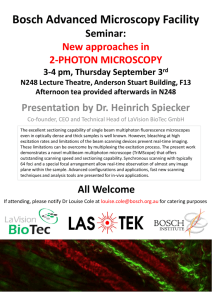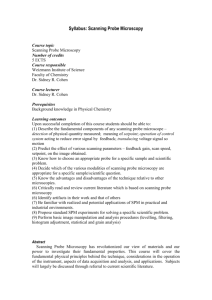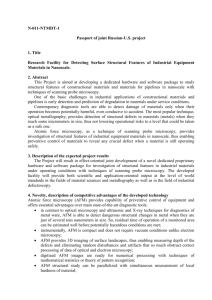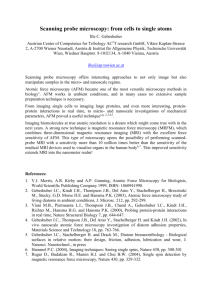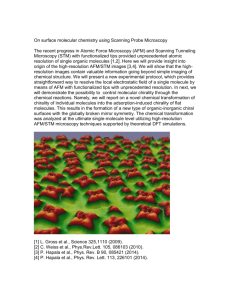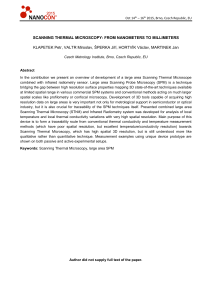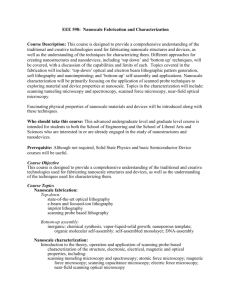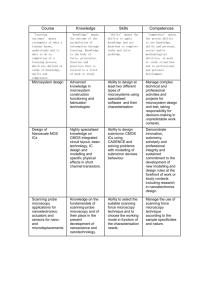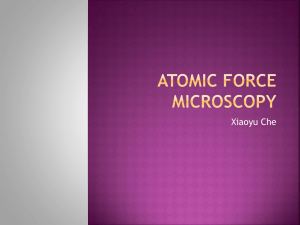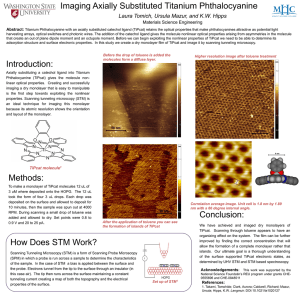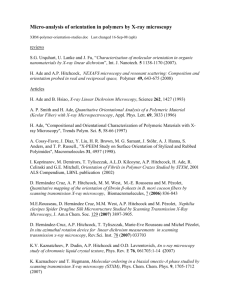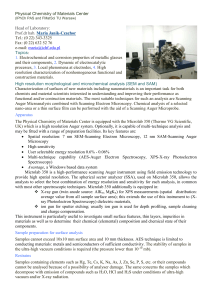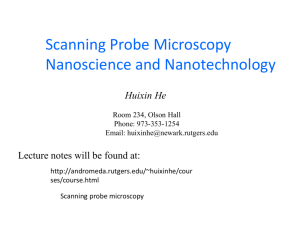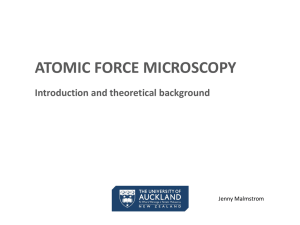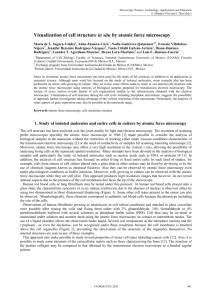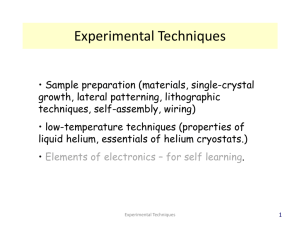Scanning nanoscopies
advertisement
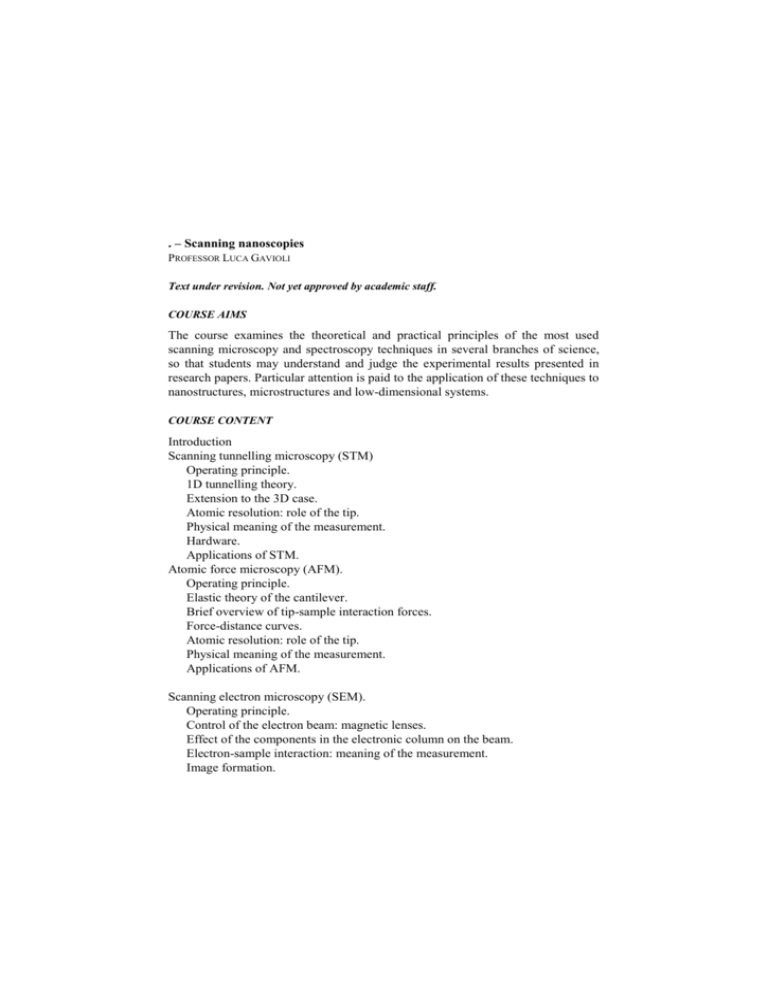
. – Scanning nanoscopies PROFESSOR LUCA GAVIOLI Text under revision. Not yet approved by academic staff. COURSE AIMS The course examines the theoretical and practical principles of the most used scanning microscopy and spectroscopy techniques in several branches of science, so that students may understand and judge the experimental results presented in research papers. Particular attention is paid to the application of these techniques to nanostructures, microstructures and low-dimensional systems. COURSE CONTENT Introduction Scanning tunnelling microscopy (STM) Operating principle. 1D tunnelling theory. Extension to the 3D case. Atomic resolution: role of the tip. Physical meaning of the measurement. Hardware. Applications of STM. Atomic force microscopy (AFM). Operating principle. Elastic theory of the cantilever. Brief overview of tip-sample interaction forces. Force-distance curves. Atomic resolution: role of the tip. Physical meaning of the measurement. Applications of AFM. Scanning electron microscopy (SEM). Operating principle. Control of the electron beam: magnetic lenses. Effect of the components in the electronic column on the beam. Electron-sample interaction: meaning of the measurement. Image formation. Scanning Auger microscopy (SAM). Basic principle. The Auger process: meaning of the measurement. READING LIST (note: all texts are available from the course lecturer) A. FOSTER – W. HOFER, Scanning Probe Microscopy. Atomic Scale Engineering By Forces And Currents, Springer, 2006. R. WIESENDANGER, Scanning Probe Microscopy and Spectroscopy, Cambridge University Press. F. J. GIESSIBL, Advances in atomic force microscopy, Rev. Mod. Phys. 75, 949 (2003). J. GOLDSTEIN - D. NEWBURY - D. JOY - C. LYMAN - P. ECHLIN - E. LIFSHIN - L. SAWYER - J. MICHAEL, Scanning Electron Microscopy and X-Ray microanalysis, Kluwe Academic/Plenum Publishers, Third edition (2003). A. ZANGWILL, Physics at Surfaces, Cambridge University Press. H. LÜTH, Surfaces and Interfaces of Solid Materials, Springer. F. BECHSTEDT, Principles of Surface Physics, Springer. TEACHING METHOD The course consists of lectures, and ends up with a test on the use of an atomic force microscope in the laboratory. ASSESSMENT METHOD Oral examination in which students describe an investigation into a topic chosen from the course, followed by questions on the subjects covered by the course. NOTES Further information can be found on the lecturer's webpage http://www2.unicatt.it/unicattolica/docenti/index.html or on the Faculty notice board. at


